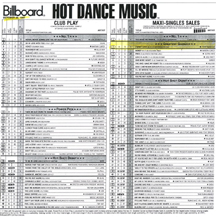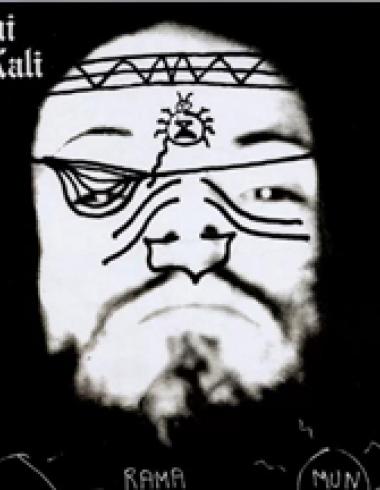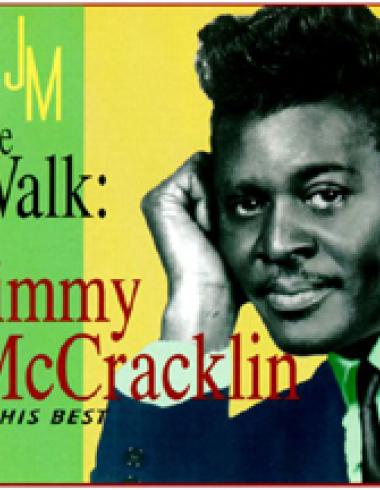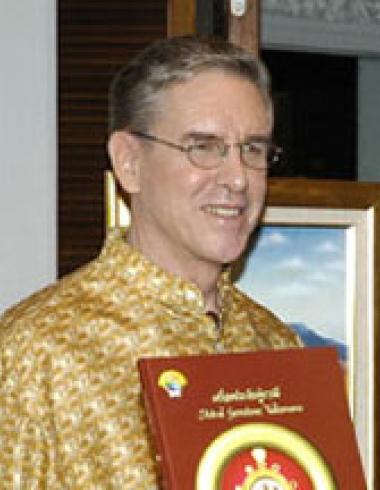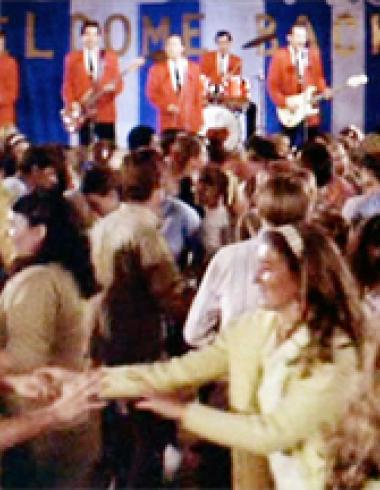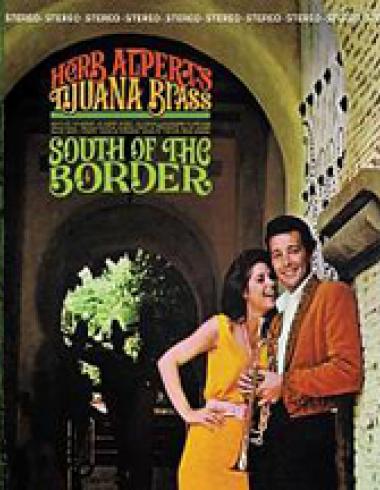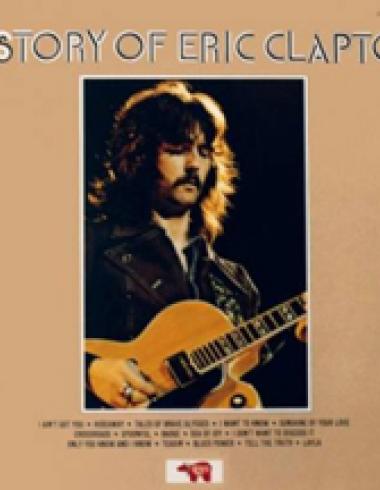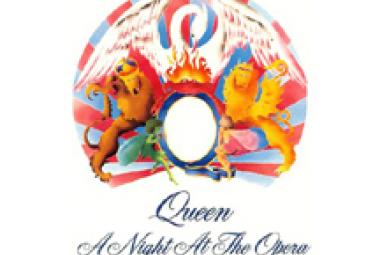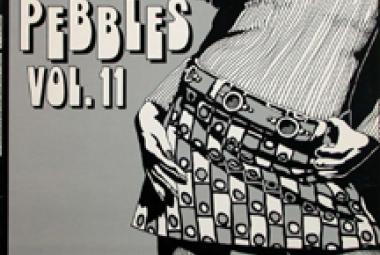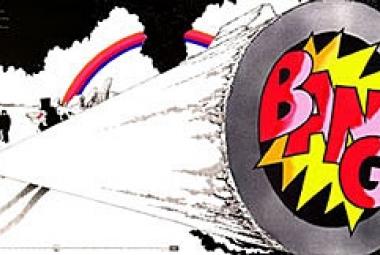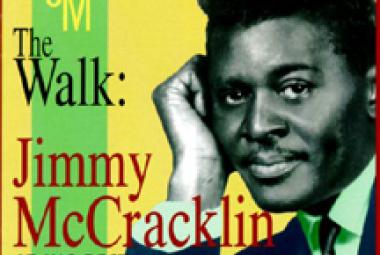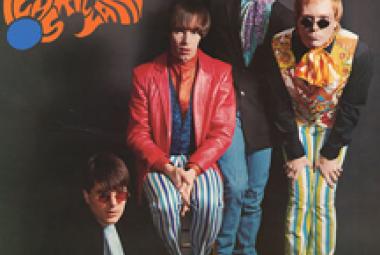The Billboard charts tabulate the relative weekly popularity of songs or albums in the United States. The results are published in Billboard magazine. Billboard biz, the online extension of the Billboard charts, provides additional weekly charts. (More from Wikipedia)
It is more difficult for someone to make a career out of novelty records, but there have been a few. Ray Stevens started with “Ahab the Arab” (it hit #5 in 1962).
* * *
The Royal Guardsmen had a million seller in 1966 with “Snoopy vs. the Red Baron”; I guess I have been reminded of it since the local paper has been running some of the “Classic” Peanuts comic strips featuring Snoopy riding his Sopwith Camel into combat, always with the battle cry: “Curse You, Red Baron!”
Their first single, “Baby Let’s Wait” eventually made the Top 40 when it was re-released after the “Snoopy” hits.
For those in the know, Lou Reed’s remarkable hit “Walk on the Wild Side” – which peaked at #16 on the Billboard Hot 100 in 1976 – is a sleazy romp through the world of artist Andy Warhol.
* * *
When she was just 13, folksinger Janis Ian – perhaps the most relentlessly soul-baring folksinger ever – began writing a heartbreaking song about interracial dating that she called “I’ve Been Thinking”; it was ultimately released in 1965 under the name “Society’s Child”. Unable to bear the hatred of her parents and the taunts of her schoolmates, she eventually breaks under the pressure and calls off the romance herself at the end of the song. Though slow to gain airplay (not to mention record sales), the song eventually peaked at #14 on the Billboard Hot 100 in 1967 – the same year that the similarly themed film, Guess Who’s Coming to Dinner was released.
* * *
“Tiptoe through the Tulips” was Tiny Tim’s hit song; sung in his distinctive falsetto and accompanying himself on his tiny ukulele, it charted as high as #17 on the Billboard Hot 100.
In Tiny Tim’s version, “Tiptoe through the Tulips” came off as a novelty song, but that is certainly not how the song started out. Written by Al Dubin and Joe Burke, “Tiptoe through the Tulips with Me” was a featured song in an historic film in 1929, Gold Diggers of Broadway and became a #1 hit recording by one of the film’s stars, the “crooning troubadour” and guitarist Nick Lucas later that year.
* * *
(March 2013)
* * *
The name of the Greg Shaw magazine called Who Put the Bomp is taken from “Who Put the Bomp (in the Bomp, Bomp, Bomp)”, a Top-40 hit by Barry Mann.
* * *
The idea for the magazine Who Put the Bomp originally was that the title of each issue would be taken from the name of a great rock song; thus, the second issue was to have been called Da Doo Ron Ron. Greg Shaw was persuaded that this was not a good idea for an ongoing publication, so the issue was named Who Put the Bomp #2, with Da Doo Ron Ron as the subtitle. This practice was dropped after the third issue, although the initials R.I.A.W.O.L. were frequently present on the front page, standing for “Rock Is a Way of Life”.
“Da Doo Ron Ron” was a #3 hit in 1963 for the girl-group the Crystals; and it was written by another famous 1960’s songwriter couple, Jeff Barry and Ellie Greenwich, together with Phil Spector (now infamous for his 2009 conviction for a murder in his home in 2003). This song is a classic example of Spector’s legendary “Wall of Sound” production technique.
(May 2013)
* * *
After Elvis Presley signed with RCA Victor Records, his first single on the new label, “Heartbreak Hotel” was released on January 27, 1956. The song was Elvis’s first #1 pop single and first million-selling record; it went on to become the biggest selling record of the entire year.
Sister Rosetta Tharpe is the only woman mentioned in the Wikipedia list, but she is not the only one that I have heard talked about. Rosemary Clooney had one of her biggest hits with “Hey There” b/w “This Ole House”; both songs individually reached #1 in 1954 on the Billboard singles charts (in case you think – as I had – that the Beatles were the first to have double-sided #1 hit singles).
Rosemary Clooney’s breakthrough hit, “Come on-a My House” in 1951 was co-written by two Armenian American cousins, the Pulitzer Prize-winning author William Saroyan and Ross Bagdasarian. Bagdasarian, under his stage name David Seville went on to great fame by experimenting with recordings using speeded-up vocals. The first result was a #1 hit in the summer of 1958 called “Witch Doctor” – remember “Ooo eee, ooo ah ah ting tang, walla walla, bing bang, ooo eee, ooo ah ah ting tang, walla walla, bing bang”? He is best known of course for creating Alvin and the Chipmunks, whose popularity continues to the present day.
* * *
“Ida Red” (as recorded in 1938 by Bob Wills and His Texas Playboys) was rewritten by Chuck Berry and was released on May 21, 1955 as the million seller “Maybellene”.
Chuck Berry has continued recording over the years and scored his only #1 hit with his double-entendre–loaded “My Ding-a-Ling” in 1972.
* * *
Pat Boone hit the top of the charts with his second single, “Ain’t That a Shame”, which came out in July 1955 – yeah, a little earlier than you expected I’ll bet. For context, that was just two months after Chuck Berry’s first single, “Maybellene” was released; and Elvis Presley wouldn’t hit #1 until early 1956.
No one can deny that Pat Boone had an ear for finding great songs to record, and he knew how to craft a single that people wanted to buy – otherwise, Boone wouldn’t have put together an impressive 38 Top 40 singles between 1955 and 1963. There is another list you could work on if you want: other rock artists who managed to achieve that feat.
* * *
According to Norman Petty, “That’ll Be the Day” by the Crickets was released in May 1957 to “humor” Bob Thiele. The song became a #1 hit that summer.
Buddy Holly’s final 45 during his lifetime, “Heartbeat” b/w “Well . . . All Right” peaked at #82 on the Billboard singles charts.
* * *
Ritchie Valens’ follow-up single, “Donna” was completely different and became a bonafide hit, peaking at #2 on the charts at the end of 1958.
Remarkably, the Big Bopper wrote “Chantilly Lace” while on the way to the Gold Star Studio in Houston; he had originally intended it to be the “B” side for “Purple People Eater Meets Witch Doctor”, but “Chantilly Lace” was on the charts for 22 weeks and topped out at #6.
* * *
Besides his own wonderful recordings, the legacy of the Big Bopper includes several other songs written by him. The best known is “White Lightning”, a song that was recorded by his life-long friend George Jones and released less than one week after the plane crash; it became Jones’ first #1 country single.
* * *
J. P. Richardson, Jr. offered one of his songs, “Running Bear” to another friend, Johnny Preston after hearing him perform at a local club. The song concerns a doomed romance between an Indian brave named Running Bear and an Indian maid named White Dove, who each come from warring tribes, much like the story of Romeo and Juliet. The song was recorded in 1958 and features the Big Bopper, George Jones and Bill Hall performing Indian chanting and Indian war cries. In January 1960, the song reached the top of the singles charts in both the U.S. and the U.K.
(June 2013/1)
* * *
Brian Wilson was none too happy that Pet Sounds wasn’t a bigger hit; though the album peaked at #10 in the American album charts (and #2 in the U.K.), “Good Vibrations” was #1 with a bullet in the U.S. and U.K. alike. Thus, in August 1966, Wilson began working feverishly on another album that would be called SMiLE to prove beyond doubt that Americans could outdo the English.
* * *
The Beach Boys soldiered on and became one of America’s most beloved rock bands, with President Ronald Reagan dubbing them “America’s band” in 1983. Over this period, some pieces of what would have been the SMiLE album – authorized and otherwise – began dribbling out. “Sail on, Sailor” was released in 1973 and was the only Beach Boys single to crack the Top 50 for nearly a decade (between 1968 and 1976).
* * *
Besides being a single for Simon and Garfunkel (backed with “I Am a Rock”), a band called Harpers Bizarre took “The 59th Street Bridge Song (Feelin’ Groovy)” to #13 in 1967.
“The Sounds of Silence” began climbing the charts and was the #1 single in the country for the first three weeks of 1966 (sandwiched between a Dave Clark Five song and a Beatles song).
(June 2013/2)
* * *
The Beatles’ early competitors on the American charts were the Dave Clark Five; their first big hit song “Glad All Over” hit the Top Ten in February 1964, though the Five wouldn't make #1 until “Over and Over” came out in November 1965.
The Swinging Blue Jeans barely missed the U.S. Top 20 with their cover of “Hippy Hippy Shake”, which was also recorded by the Beatles.
Much to my surprise, in the Rip Chords I finally found a rock band that did not have a listing in Wikipedia with a genuine hit song; their single “Hey Little Cobra” was one of the biggest hit songs in surf music, making it to #4 in early 1964, even though the surf scene was already in significant decline following the recent arrival of the British Invasion.
Plenty of playbacks of their follow-up Top 30 hit “Three Window Coupe” are available on YouTube, but here is a nice live performance of this song by the band in 2012, together with a well-known surf instrumental as the introduction whose name escapes me (“Pipeline”?): www.youtube.com/watch?v=XNRTGOOGhz8 .
(July 2013)
* * *
Gene Pitney had a Top 10 hit with “The Man Who Shot Liberty Valance”, though he was asked not to record it before the movie came out.
The two brothers also had some early success as songwriters. In 1967, P. J. Proby had his biggest U. S. hit song with the Top 30 release “Niki Hoeky” that was written by Pat Vegas, Lolly Vegas and Jim Ford.
Redbone released a total of seven albums between 1970 and 1977; “Come and Get Your Love” is on their fifth album, Wovoka. The band had two earlier successful singles also, “Maggie” (1970) and “The Witch Queen of New Orleans”, which reached #21 in 1971.
Another former Redbone drummer, Danny Spanos (also known as George Spanos) had a Top 40 hit in 1983 as a solo artist with “Hot Cherie”.
On the last album by Romeo Void, Instincts, the band reached the Top 40 with the single “A Girl in Trouble (Is a Temporary Thing)”; according to Debora Iyall, this song is intended as an answer to Michael Jackson’s mega-hit “Billie Jean”.
(August 2013)
* * *
Another one-hit wonder, the Murmaids took “Popsicles and Icicles” to the Top 3 in January 1964.
Peter Asher and Gordon Waller performed as Peter and Gordon, a British duo who enjoyed several years of success, particularly with their #1 hit in 1964, “World Without Love”.
After working on a few tracks on Don’t Cry Now, Peter Asher helmed Linda Ronstadt’s 1974 breakthrough album, Heart Like a Wheel; it was a #1 album and featured a #1 single, “You’re No Good”.
In 2004, Linda Ronstadt quietly released Hummin’ to Myself that was recorded with a jazz combo; it made #2 on the Billboard Top Jazz Albums chart.
(October 2013)
* * *
“Cherry Bomb” became the opening track on the debut album by the Runaways and the band’s first single; while “Cherry Bomb” only made it to #106 on the Billboard singles charts, the song was named #52 on the list of the greatest hard rock songs of all time by VH1.
Joan Jett and the Blackhearts’ debut album, I Love Rock ’n’ Roll was their most successful, reaching #2 on the Billboard album charts and spawning a #1 hit single, “I Love Rock ’n' Roll".
The second album by the Bangles, Different Light spawned two major hit singles, “Manic Monday” (written by Prince under a pseudonym) and the #1 song “Walk Like a Egyptian”. Several other hits followed, including another #1 song in 1989, “Eternal Flame”.
Surprisingly, two of their stellar ballads hit #1 on the charts in 1959 in quick succession: “Come Softly to Me” and “Mr. Blue”. Nor was that the end of it: The Fleetwoods had a total of eleven Top 100 hits, with “Tragedy” landing in the Top Ten in 1961.
In all, the Mamas and the Papas racked up nine Top 30 hits during the mid-1960’s and in many ways personified folk rock for most Americans – or at least the non-psychedelic side of that genre.
(November 2013)
* * *
After the Velvet Underground broke up, Lou Reed mounted a decades-long solo career that started with a bang: “Walk on the Wild Side” is hard to top as an I-can’t-believe-what-I’m-hearing song, but it was as irresistible in 1972 as it is today and made it to #16 on the Billboard singles charts.
* * *
One track on the L7 album Bricks Are Heavy, “Pretend We’re Dead” received a lot of airplay and MTV exposure; the song peaked at #8 on the Billboard Modern Rock Tracks charts.
(December 2013)
* * *
The lead single “Fast Car” was a Top 10 hit in both the U.S. and the U.K.; and Tracy Chapman won a clutch of Grammies in 1989 also.
* * *
Melissa Etheridge’s first 6 albums have been certified Platinum, with her biggest seller being Yes I Am (1993), where the title is an evident confirmation of the rumors of her being a lesbian.
One of Lesley Gore’s songs, “California Nights” reached the Top 20 in 1967.
* * *
Janis Ian’s “Society’s Child” was released three different times between 1965 and 1967; ultimately, the song reached #14 on the charts in the summer of 1967 and eventually sold 600,000 copies. .
Janis Ian’s “At Seventeen” (1975) and the accompanying album, Between the Lines both reached #1 on the Adult Contemporary Singles and Hot 100 Albums Billboard charts, respectively, with much less drama than had befallen “Society’s Child”.
* * *
In a sense, “Is That All There Is?” by Peggy Lee is a grimmer retelling of the Joni Mitchell song “Both Sides Now” that Judy Collins released as a Top 10 hit the previous year.
(January 2014)
* * *
Within two months of its release, Cheap Thrills was the #1 album in the country on the Billboard charts where it remained for most of the rest of the year. Surrealistic Pillow from the Jefferson Airplane made it to #3, and the Grateful Dead had a #6 album with In the Dark – but not until 1987.
(February 2014)
* * *
Crosby, Stills, Nash and/or Young have released any number of cultural and counter-cultural touchstones over the years, such as “Teach Your Children” (featuring Jerry Garcia of the Grateful Dead on pedal steel guitar; the song actually made the country charts).
* * *
Richie Furay stayed with Poco through their sixth album, Crazy Eyes (1973); the album made the Top 40, but with the lackluster sales of both albums and singles, even he was starting to get discouraged. Though only Rusty Young remained among the founding members, their 1978 album Legend was the band’s most successful, reaching #14 on the Billboard album charts and including two Top 20 singles, “Crazy Love” and “Heart of the Night”.
* * *
The sole album by Beck, Bogert & Appice, Beck, Bogert & Appice came out in March 1973 and hit #12 on the Billboard album charts; it has been reissued several times.
* * *
The band’s album Grown in U.S.A. was released in 1972 in a limited pressing of 1,000 and was well received; the album even made the “Bubbling Under the Top 100” list on the Billboard album charts. However, local promotion was limited, and Homer decided not to print any more albums after the initial thousand were sold out.
(April 2014)
* * *
For a change, no attempt was made to market a different album in the U.S. from the one that was released in England, and Americans responded by driving the album to #4 on the Billboard album charts, even better than the #5 showing that Cream’s Disraeli Gears reached in the U.K.
* * *
The Derek and the Dominos album includes of course their massive hit “Layla”, but the album was not a big seller right away – in fact, Layla and Other Love Songs didn’t make the record charts in England until 2011 (for one week). However, “Layla” was included on an album called The History of Eric Clapton and was released by Atlantic Records as a single in 1972; the song then made the Top Ten in both the U.S. and the U.K. “Layla” was a hit again in 1982; and after Eric Clapton reworked the song into a ballad for his MTV Unplugged sessions in 1992 – preserved on the album Unplugged – the song made #12 on the Billboard charts.
* * *
The Soul Agents released their second single on October 15, 1964, also on Pye Records; the band picked two other traditional songs for this 45, “The Seventh Son” b/w “Let’s Make it Pretty Baby”. “The Seventh Son” was a Top Ten hit song for Johnny Rivers in 1965.
* * *
February 19, 1965 marked the appearance of the third single (on Pye) by the Soul Agents, “Don’t Break it Up” b/w “Gospel Train”. The British songwriting team of Ken Howard and Alan Blaikley wrote “Don’t Break it Up”; they are probably best known for the U.K. Number One hit (and U.S. #5) by the Honeycombs, “Have I the Right”.
(May 2014)
* * *
Frequent Jefferson Airplane lead singer Grace Slick was not an original bandmember; Slick was previously in another San Francisco band called the Great Society. In 1967, Grace Slick joined Jefferson Airplane and brought with her the Darby Slick song “Somebody to Love” and her own song “White Rabbit”. They became her new band’s biggest hit songs, with both reaching the Top Ten, and she became the most prominent member of the group.
* * *
Starship had more of a pop sound than either Jefferson Airplane or Jefferson Starship but was also the most successful: The first two tracks on the album Knee Deep in the Hoopla, “We Built this City” and “Sara" hit Number One on the Billboard singles charts; and a third Number One, “Nothing’s Gonna Stop Us Now” came out in 1987.
* * *
The best-known and probably best album by Manfred Mann’s Earth Band is The Roaring Silence (1976); “Blinded by the Light” reached Number One in Billboard’s Hot 100.
(June 2014)
* * *
Judy Collins heard a demo of the Sandy Denny song and decided to include “Who Knows Where the Time Goes” as the B-side of her #8 hit single, “Both Sides Now” (written by Joni Mitchell).
* * *
The unusual charting history of “Why Me” is related by Wikipedia: “‘Why Me’ was [Kris] Kristofferson’s lone major country hit as a solo recording artist, reaching No. 1 of Billboard magazine’s Hot Country Singles chart in July 1973. The song, despite peaking only at No. 16 of the Billboard Hot 100, had, to that time, one of the longer runs (19 weeks) in the top 40 and the most chart reversals (6) in one run on the Hot 100. As a result, ironically, the song managed to be ranked as the second most popular Hot 100 single of 1973.”
Kris Kristofferson is probably better known as a songwriter – such as Janis Joplin’s posthumous hit song, “Me and Bobby McGee”, plus “For the Good Times” (a hit by Ray Price, among others), “Sunday Mornin’ Comin’ Down” (recorded by Johnny Cash) and “Help Me Make It Through the Night” (Sammi Smith’s version being the most successful), which were all #1 hits on one Billboard or Canadian chart or other.
* * *
Other songs that Marijohn Wilkin wrote or co-wrote include “Waterloo”, a #1 hit for Stonewall Jackson.
* * *
“One Day at a Time” reached the Country Top 20 in the version by Marilyn Sellars in 1974 and also made #37 on the Billboard Hot 100.
Cristy Lane’s remake of “One Day at a Time” hit #1 on the Billboard Hot Country Singles, and the song became the cornerstone of a television and Internet marketing juggernaut for Cristy Lane’s music.
* * *
One of the early songs that I remember with a Christian theme is “People Get Ready”, which was a #14 hit for the Impressions in 1965.
* * *
Their biggest hit song by Pacific, Gas and Electric was “Are You Ready?”, which came out in 1970 and reached #14 on the Billboard Hot 100. The band had a second song crack the Top 100 in 1972, “Thank God for You, Baby”.
* * *
Anne Murray is the first Canadian female solo artist to reach #1 on the U.S. charts.
I think of “Put Your Hand in the Hand” as the quintessential early Christian contemporary song. The best known version is by Ocean (from Canada), who reached #2 on the charts with the song in 1971.
“Spirit in the Sky” by Jewish-American singer-songwriter Norman Greenbaum is one of the biggest Christian-themed songs in music. “Spirit in the Sky” sold 2,000,000 copies and reached the top of the charts in the U.K., Australia, Ireland, Canada, and Germany; it went to #3 in the U.S.
* * *
“Jesus is Just Alright” was the third single released by the Doobie Brothers (in late 1972). While originally peaking at #35, the song quickly became a staple of classic rock stations.
* * *
Terri Gibbs had a major crossover hit with her debut 1981 single, “Somebody’s Knockin’” which reached #13 on the Billboard Hot 100 and #3 on the Adult Contemporary charts.
Her follow-up single “Rich Man” made the Country Top 20, as did two later singles.
* * *
In 1960, the Jerry Butler single “He Will Break Your Heart” hit #1.
* * *
The label released two 12-inch singles from the Mikki album, “Itching for Love” (as noted earlier, two versions of this song that total over 16 minutes open Side 1 of Mikki) and “Look Before You Leap”. As noted on Rare and Obscure Music, “Itching for Love” was on the Billboard Black Singles charts for 13 weeks, peaking at #67 in November 1982; while “Look Before You Leap” made it to #82 in April 1983. Evidently the album never charted.
In 1984, Mikki released another 12-inch single, “Love Emergency” on Rams Horn Records and Pop Art Records; this was her best success on the charts (#59).
(July 2014)
* * *
Bob Dylan was still a polarizing figure in the late 1970’s, and Slow Train Coming alienated at least as many fans as it attracted. Still, in its first year, the album outsold two of Dylan’s best albums, Blonde on Blonde and Blood on the Tracks in their first years; and “Gotta Serve Somebody” was a #24 hit single – his highest placement in the Billboard Hot 100 since “Knockin’ on Heaven’s Door” in 1973.
(August 2014)
* * *
While the quotation about “more popular than Jesus” itself faded quickly – particularly after the band released their monumental Sgt. Pepper’s Lonely Hearts Club Band album the following year – its effects never really went away. Here is the chorus in the Beatles’ final #1 single, “The Ballad of John & Yoko” (and clearly John Lennon is addressing Jesus, not voicing an oath): “Christ, you know it ain’t easy / You know how hard it can be / The way things are going / They’re gonna crucify me.”
* * *
The hit song from the George Harrison triple album All Things Must Pass is "My Sweet Lord"; it was the first #1 hit by an ex-Beatle and was also the biggest selling single in the UK in 1971.
(September 2014)
* * *
The Godspell album was released in July 1971 on Bell Records and performed well on the charts. Sales began slipping until Bell released the single “Day by Day” by the original cast in 1972, with Robin Lamont singing lead. The single reached #13 on the Billboard Hot 100.
(October 2014)
* * *
The lyrics in “God Gave Me Everything” by Mick Jagger make reference to Cliff Richard, a leading English rock star who has become well known for his Christianity. While he scored one major hit in America, the #6 song “Devil Woman” from 1976, he has a fairly low profile in this country.
* * *
“Personal Jesus” by Depeche Mode was the first single from the band’s 1990 album Violator that propelled them to worldwide success, reaching #7 on the Billboard Hot 200 Albums chart.
The Depeche Mode album Songs of Faith and Devotion topped the album charts in the US and the UK.
* * *
Judy Collins’ lovely rendition of “Amazing Grace” was an unexpected hit song, staying on the charts for 15 weeks and peaking at #15.
* * *
One of the routines by Wendy Bagwell and the Sunliters, “Three German Police Seeing-Eye Dogs and One Yellow Cat” was a Top 20 hit in 1984.
(November 2014)
* * *
“Little Honda” by the Hondells (written by Brian Wilson and Mike Love of the Beach Boys) honored a different brand of Japanese motorcycle and was a Top Ten hit in 1964.
* * *
The Ventures released “Walk, Don’t Run” on their Blue Horizon label in 1960; it rose to #2 on the charts, behind only “It’s Now or Never” by Elvis Presley.
In all, 17 of the Ventures’ albums made the Top 40, with total sales of more than 100 million.
* * *
Unaccountably, the performance of “Mule Skinner Blues” by the Fendermen.became a hit and made the Top Ten.
* * *
The Chantays instrumental song “Pipeline” made #4 on the Billboard Hot 100 in May 1963 and #16 on the UK charts.
* * *
“Wipe Out” is a million-selling surf instrumental dating from 1963. As performed by the Surfaris, this song made it to #2 on the charts, kept from the top only by “Little” Stevie Wonder’s first hit song “Fingertips”.
* * *
The soundtrack for the Roger Corman film The Wild Angels (1966) was a breakthrough for Davie Allan and the Arrows and yielded their biggest hit song, “Blues’ Theme”. The song stayed on the Billboard charts for 17 weeks (it peaked at #37).
(December 2014)
* * *
The Sun Herald newspaper obit mentions Kim Fowley’s work with a #11 hit by Skip and Flip called “Cherry Pie”; also, with Gary S. Paxton – aka “Flip” in the other band – Fowley had a Number One hit in 1960 that was released under the name the Hollywood Argyles called “Alley Oop”, based on the comic strip character Alley Oop.
* * *
The following year (1958), Phil Spector assembled the Teddy Bears (the only vocal group that included Spector as a member); Sandy Nelson was a last-minute addition, with other bandmembers including Marshall Leib and lead singer Annette Kleinbard. Phil Spector wrote a song for the group called “To Know Him Is to Love Him”, based upon an inscription on his father’s tombstone, and the song became a Number One hit in December 1958. As Wikipedia put it: “At 19 years old, Spector had written, arranged, played, sung, and produced the best-selling record in the country.”
* * *
In 1961, the two men who put together the “Alley Oop” Number One hit helped craft the first song by Paul Revere and the Raiders to make the Top 40, the instrumental “Like, Long Hair”, with Kim Fowley as co-producer and Gary S. Paxton as arranger.
Glenn Yarbrough had a #12 hit with a song that was arranged by David Gates, “Baby the Rain Must Fall”, the title song for the 1965 Steve McQueen/Lee Remick film Baby the Rain Must Fall.
* * *
“Popsicles and Icicles” by the Murmaids reached #3 on both the Billboard and Cash Box record charts in January 1964. Additionally, the song was ranked #1 on the Record World charts for the week of January 18, 1964; since the next Number One song on the Record World charts was “I Want to Hold Your Hand” by the Beatles, “Popsicles and Icicles” is often cited as the last Number One song of the pre-British Invasion era.
* * *
Kim Fowley’s own albums are an uneven lot to say the least, though this appears to be intentional to a considerable extent. His third album, Outrageous (1968) is the only one of his albums to (barely) crack the Billboard Top 200 Albums charts.
* * *
“They’re Coming to Take Me Away, Ha-Haaa!” was recorded in 1966 by Napoleon XIV, the pseudonym of Jerry Samuels. The song climbed to #3 on the charts but then plummeted almost out of the Top 40 just two weeks later after radio stations quit playing the record because of its offensive lyrics.
(January 2015/1)
* * *
In 1960, Glen Campbell moved to Los Angeles to become a session guitarist. At about the same time, Glen Campbell also joined the Champs, which had a Number One hit in 1958 with “Tequila”. The song was written by bandmember and saxophone player Danny Flores, known as the “godfather of Latino rock”.
* * *
The statistics about the Wrecking Crew are staggering, with various members appearing on tens of thousands of recordings. Hal Blaine is believed to be the most recorded drummer in history, while Tommy Tedesco is said to be the most recorded guitarist. From Wikipedia: “Blaine is credited with having played on at least forty U.S. #1 hits and more than 150 Top Ten records.”
Superstar record producer Phil Spector used members of the Wrecking Crew to create his famed “Wall of Sound”; while Beach Boys bandleader Brian Wilson used these musicians on their acclaimed Pet Sounds album and their Number One hit “Good Vibrations”.
Several members of the Wrecking Crew went on to great prominence in the music world. This time the Wikipedia quote is from one of my own contributions: “Also, Nino Tempo with his sister Carol (under her stage name April Stevens) had a U.S. #1 hit song in 1963, ‘Deep Purple’.”
* * *
My final experience in Nashville on that trip was to see a musical play called Hank Williams: The Lost Highway that featured Jason Petty in the title role – he both looked and sounded like the man. The play was staged at the legendary Ryman Auditorium, the home of The Grand Ole Opry from 1943 through 1974. Much of the story turned on what Hank Williams should do with his masterpiece “I’m So Lonesome I Could Cry” that didn’t fit in well with his other work in this period. Ultimately it was released in 1949 as the B-side of his #2 hit “My Bucket’s Got a Hole in It”; the song was later covered by numerous recording artists, notably B. J. Thomas, whose cover of “I’m So Lonesome I Could Cry” hit #8 in the Billboard charts in 1966 and led to a re-release of the original song in the same year that just missed the Top 40.
* * *
As an example, I have previously written of the origin of the Ritchie Valens hit from 1958, “La Bamba”. The 1987 biopic film about Valens also took the name La Bamba, and “La Bamba” as performed in the film by the Chicano rock band Los Lobos became a Number One hit that year.
* * *
One of the songs, “Wildwood Flower” has perhaps the loveliest melody in all of country music. At the time, I knew the song only by reputation, and mainly because of “Wildwood Weed” (1974) – which is basically about marijuana – a #7 hit song by Jim Stafford that mentions the song.
* * *
The first LP by Peter, Paul and Mary, Peter, Paul and Mary (1962) is one of the few folk music albums to reach Number One on the Billboard album charts.
(February 2015)
* * *
On the other hand, Bob Dylan’s next album, The Freewheelin’ Bob Dylan was a big hit, and largely because Peter, Paul and Mary had a #2 hit with “Blowin’ in the Wind” that was released just three weeks after Freewheelin’ – Albert Grossman, who was managing both Dylan and PP&M in that time period, brought them the song, and they immediately recorded and released it.
* * *
The best known song on the Woody Guthrie album Dust Bowl Ballads is “So Long, It’s Been Good to Know Yuh” (called “Dusty Old Dust” on the album). The Weavers had a hit with “So Long (It’s Been Good to Know Yuh)” in 1951, taking it to #4 on the pop music charts and becoming one of their “staple” songs. From Wikipedia: “The repetitive chorus has been described as ‘a witty, black retort, utterly negative and apocalyptic.’”.
(March 2015)
* * *
Another peculiar songwriting credit has to do with Bobby Darin’s first hit song, “Splish Splash”, as I have mentioned previously. The story is that the famous New York disc jockey Murray the K made a bet with Darin in 1958 that he could not write a song that started out, “Splish splash, I was takin’ a bath” – the phrase was suggested to him by his mother Jean Kaufman. Bobby Darin took the song to #3 in the nation, and it was a major boost for his career.
* * *
Holland-Dozier-Holland is a songwriting powerhouse; besides writing some of Motown’s best-known hits, they wrote most of the songs on entire albums for some of the biggest stars on the label. For the Supremes’ second album Where Did Our Love Go (1964), Holland-Dozier-Holland wrote the group’s three Number 1 hits that appear on the album (as well as 10 of their 12 Number 1 hits overall) – “Where Did Our Love Go”, “Baby Love", and “Come See About Me” – they also wrote 5 of the 9 other songs on the album. About Where Did Our Love Go, Wikipedia says: “With the release of this album, the Supremes became the first act in Billboard magazine history to have three number-one hits from the same album. It was the album that introduced ‘The Motown Sound’ to the masses. It was also, at the time, the highest ranking album by an all female group.”
While the album made it to #13 on the British charts, Meet the Supremes didn’t sell well in this country; the two singles from the album, “Your Heart Belongs to Me” and “Let Me Go the Right Way” barely cracked the Billboard Hot 100, although the latter song made it to #26 on the R&B Singles chart.
All told, Motown released eight singles by the Supremes between 1961 and 1963, and none made it into the Billboard Top 40. In the Motown offices, the group was often referred to as the “No Hit Supremes”.
(April 2015/1)
* * *
Like many of the British Invasion bands, the Rolling Stones primarily played and recorded R&B classics and were slow to begin writing their own songs. By contrast, the Beatles were recording mostly new material, and this seemed to be more popular at least with American audiences – the Fab Four scored one #1 single after another over here, beginning with “I Want to Hold Your Hand” in February 1964.
* * *
A wealth of blues and R&B singles in a similar vein were released by the Rolling Stones and numerous other British bands in this time period, but none of them made much of an impression over here. In fact, Allmusic reports that the Rolling Stones 45 discussed above, “Not Fade Away” is the only one that did reasonably well on the Billboard charts; while the song reached #3 on the UK charts, it managed #48 in the US.
“(I Can’t Get No) Satisfaction” was the Rolling Stones’ first #1 hit in America; and believe it or not, that did not happen until the Stones had released some 12 or 15 previous singles over nearly a two-year period. Their previous Top 10 hits were “Time Is on My Side” and “The Last Time”. “Satisfaction” was released in the US 50 years ago, in June 1965. After that, there was no stopping them.
“Get off of My Cloud” was one of the Stones’ non-grammatical song titles according to what my English teachers told me, as was “(I Can’t Get No) Satisfaction” (in fact, this second #1 song was their next single).
* * *
The next two drummers for the Primitives made a name for themselves in later years. Dave Withers took Mick Charleton’s place in the band when they moved to Italy; according to Mal Ryder, he played on all of the early records that he made with the Primitives. He had the nickname Pique or Pick by then; Withers returned to England in 1969. In the late 1970’s, Pick Withers became the founding drummer with the British rock band Dire Straits, playing on their first four albums, including their #4 hit “Sultans of Swing".
(May 2015)
* * *
The first single that is generally credited to the Beatles is “My Bonnie” b/w “The Saints”; the single was released in 1961 and reached #26 in the US and #48 in the UK.
Perceived drug references in the lyrics caused a broadcasting ban on “Eight Miles High” in the U.S. shortly after its release; and largely as a result, the song stalled at #14 on the Billboard Hot 100 and #24 on the UK singles chart.
“Shapes of Things” by the Yardbirds is the first song written by the bandmembers that became a hit; it was released on February 25, 1966 and reached #3 on the UK singles chart and #11 on the Billboard Hot 100.
Another is the debut single by the 13th Floor Elevators called “You’re Gonna Miss Me”. The song was released on January 17, 1966 (though its national release was not until May 1966) and climbed as high as #55 on the Billboard Hot 100.
“I Had Too Much to Dream (Last Night)” by the Electric Prunes made it to #11 on the Billboard Hot 100, while their second hit “Get Me to the World on Time” was at #27; both songs just missed the Top 40 in the UK.
At about the same time as “I Had Too Much to Dream (Last Night)” by the Electric Prunes but on the opposite coast, a Bronx, New York band called Blues Magoos had a hit single with “(We Ain’t Got) Nothin’ Yet” that reached #5 on the Billboard charts. Almost immediately after the song’s original release, in February 1967, a British band called the Spectres released their own version of “(We Ain’t Got) Nothin’ Yet”. By the end of that year, the band had changed its name to the Status Quo (dropping “the” in 1969 to become Status Quo). In January 1968, they released a psychedelic single of their own, “Pictures of Matchstick Men”, which was a #12 hit in the US and a #7 hit in the UK.
(July 2015)
* * *
